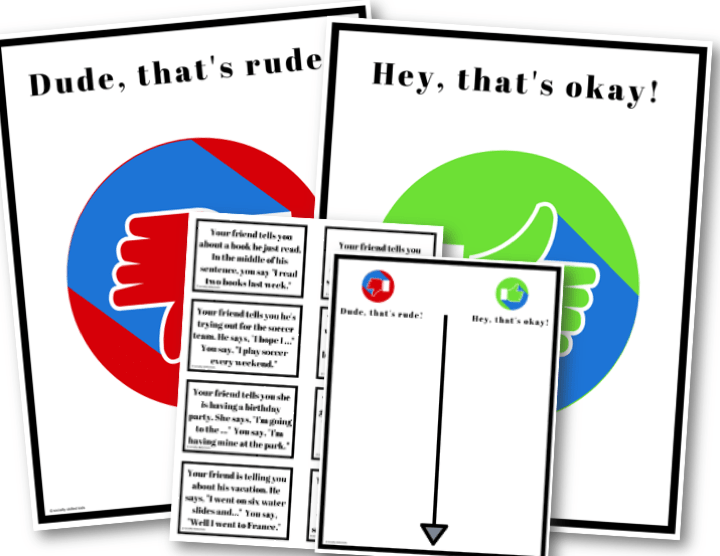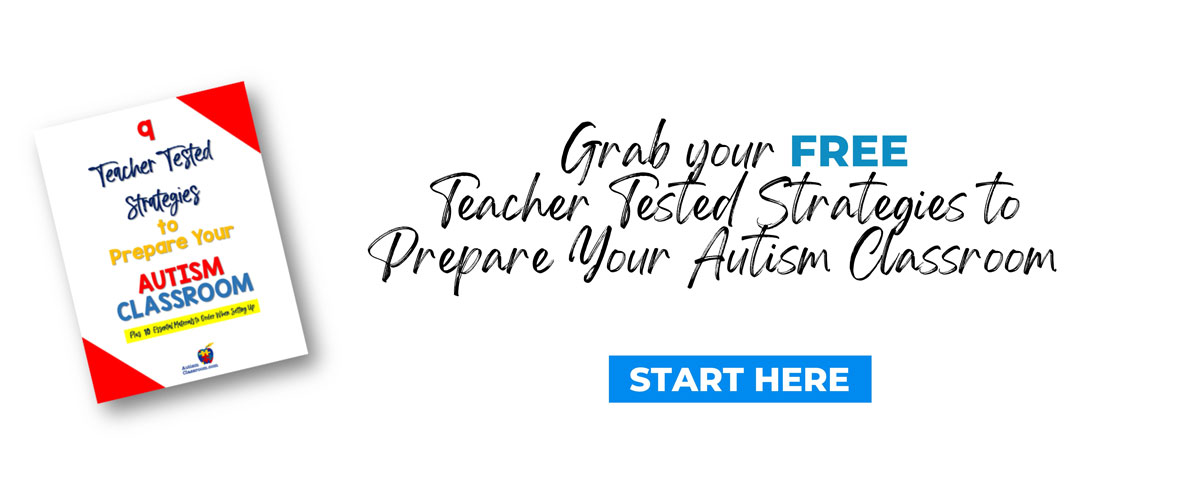Inside: Autism Classroom's guest blog series, showcasing with articles/blogs, supports and resources from various educators.
Interrupting others, or ‘blurting,’ is a challenge for many children with special needs. Yet, refraining from blurting is very important to maintain good conversations, collaborative work production, social interactions, and indeed, friendships.
Conversing, working or playing with someone who frequently blurts out, is usually very frustrating for others. Teaching and supporting students to decrease blurting, will help them maintain better all-around relationships with their peers.
When teaching students how to stop, or decrease blurting, I always start by teaching them why they should stop blurting.
Many students who blurt frequently, have challenges with perspective taking, and may not understand the way their blurting makes others feel. In order to ‘buy into’ decreasing blurting, these students will need to learn how their peers feel, when they do it. This can be achieved through a combination of explicit teaching experiences involving; instructional activities, role-playing, discussion, the use of specifically targeted videos and stories.
Three of my favorite stories to address interrupting/blurting are; Interrupting Chicken by David Ezra Stein, Lacy Walker, Non-Stop Talker by Christianne Jones and The Blurter by Katy Sojka. Reading a story can be a great way to start a discussion on how and why to stop blurting.
Need a social story to help one of your students decrease blurting? Click HERE for a story appropriate for Preschool-Kindergarten, HERE for a story appropriate for K-2nd grade and HERE for a story appropriate for 3rd-5th grade.
Interrupting and blurting may make others feel:
- That you are more concerned with your opinion than theirs
- That you feel what you have to say is more important than what they were saying
- Disrespected and unimportant
- Confused and or worried that they will not get to finish what they were trying to say
Our students may need help understanding that these are not good feelings and are not the messages we want to send to others.
I like to teach my students to consider how they would feel if someone did this to them. This can be a great time to teach a lesson on ‘The Golden Rule’ {treating others they way we want to be treated}.
Next, students may need to be supported to gain an awareness of why they blurt.
Behavior is a form of communication, and it is critical to understand what the behavior of blurting is communicating, to maximize success in decreasing it.
When seeking to decrease blurting behavior in a student, we should start by asking ourselves, “Why might this student be blurting? What is it that they are communicating?”
Some reasons children may blurt are:
- They lack self awareness
- They have poor self regulation
- They have decreased perspective taking skills
- They have a fear of forgetting what they want to say
- They have poor active listening skills
- They feel a need to be in control
- They are really excited about a topic
- They have challenges with conversational turn taking/timing
Teaching Students To Decrease Blurting
Modeling good conversational behaviors and skills and providing plenty of practice and support through short, scaffolded and facilitated chit-chat, is a great way to start.
First, remind students that they will need to take turns talking and discuss why.
Things to Try:
- Decide on a signal {blurt alert sign, hand up, etc.}.
- Teach students to ‘notice others’ and think about when it may be a good time to talk or listen
- Teach students to wait for an ‘open space’ before talking
- Teach students when to use an ‘acceptable interruption’ for example; in an emergency or to show excitement at the very end of the speaker’s statement
Teach ‘active listening’ {careful listening by noticing non-verbal cues and demonstrating to the other person that you are listening}
Some strategies that may help your students to use active listening may be; to look at the speaker, think about what they are saying, notice their body language and facial expressions, and to use facial expressions and body language to show you are listening.
Need some explicit teaching activities to help? Click HERE to see my Conversation Behaviors set.
With thoughtful, consistent and compassionate practice and instruction, students who blurt can learn to become more aware of themselves and others, improve self-regulation and increase perspective taking to limit the occurrence of this behavior.
Would you like a fun activity to help your students learn the difference between blurting out {Rude Interruptions} and Acceptable Interruptions? Click HERE for a free behavior sort activity.

You can read more about conversational skills in my blog post HERE.
Thanks So Much and Happy Teaching!
Cindy ~Socially Skilled Kids


